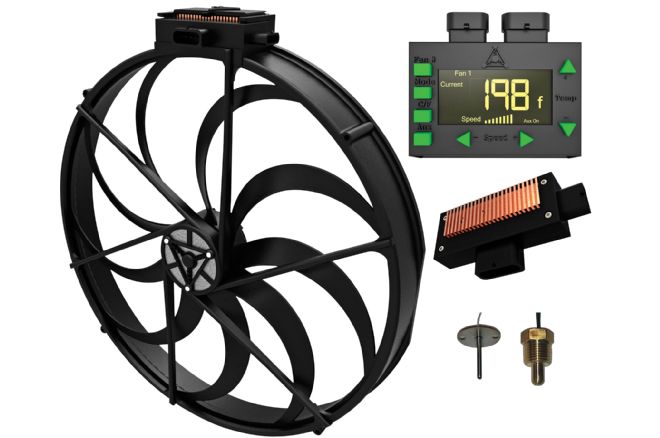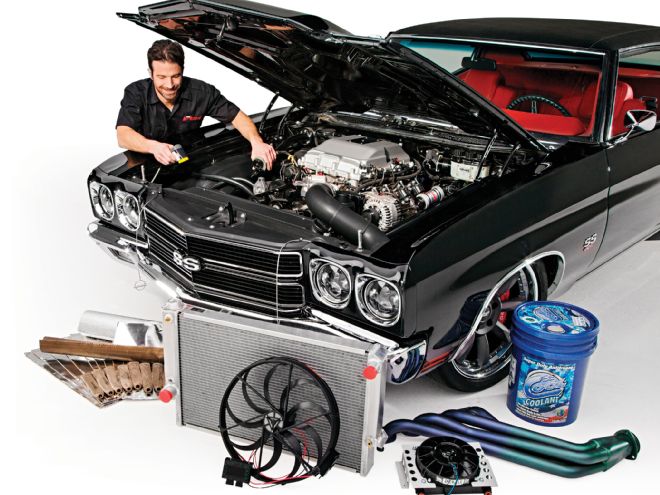
There are numerous forces that work against your car's performance and your enjoyment of it, but one of the most prevalent is heat. From lowering horsepower, to breaking down fluids, to disrupting ignition, increasing wear, and just making you a sweaty mess, it's pretty fair to say that heat is your car's worst enemy.
From the factory most vintage cars have a small amount of heat management, such as the hood, firewall, and floor insulation, and maybe even a modest amount of exhaust heat reflection, but that's about where it ends. The materials and application may have been acceptable for low-powered stock cars 40-plus years ago, but things degrade over time. Plus, extra horsepower intensifies the heat production, so the limit of the stock stuff is quickly exceeded.
The best internal combustion engines are only around 15 percent efficient at turning fuel into power. The rest of it is lost as heat. The more you start asking of an engine, the more heat it generates, and the more it spreads through the vehicle systems and cabin. Basically our beloved pursuit of horsepower serves only to exacerbate the heat problem.
How so? Well, unless you have an air induction system that draws from outside the engine bay, such as a ram or cowl system, the air your engine ingests will be at the ambient temperature under the hood. How hot does your engine run? How hot are your manifolds or headers? It's not uncommon at all for underhood temps to hover way above ambient even when the car is in motion. Remember, most air entering the engine bay passes through the radiator. In traffic, things get even worse. Underhood temps can rise well into the triple digits. That same radiated heat creeps its way into the vehicle cabin and serves to raise the temperature and make your drive a sweat-filled experience. What's a hot rodder to do?
To help you concoct your plan to beat the heat and make your ride more powerful and more pleasant, we've pulled together our top 9 recommendations to contain, reflect, or absorb the infuriating heat. All of the companies we featured have far more solutions than we have space to cover here, so we picked out a handful of our favorites. Be sure to visit their websites for the full product rundown, and watch for installs in future issues of PHR.
You can’t beat the heat until you know where it’s coming from! Harbor Freight sells these Cen-Tech laser-targeted infrared sensing thermometers for under $40 and we use ours all the time. This is also particularly useful for testing the effectiveness of your product application and finding places you may have missed. As a bonus, it can be used for trouble-shooting, such as finding misfiring cylinders or reading cylinder-to-cylinder fuel distribution.
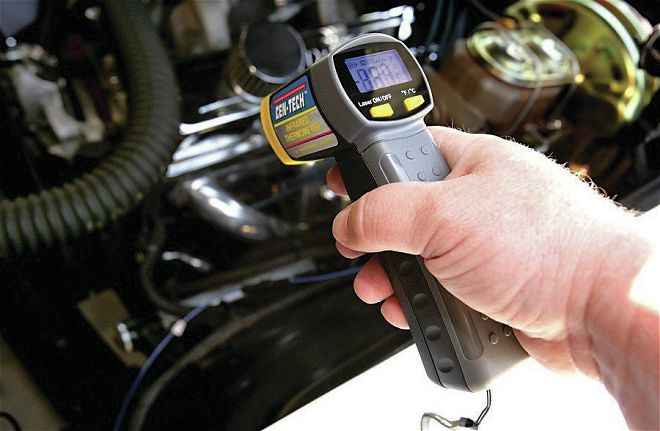
The engine block gets hot, but by far the biggest source of radiant heat under the hood of any car is the exhaust. With exhaust gas temps in the multiple hundred-degree range under throttle (the hot side of a turbo housing can approach 1,500 degrees), it's not hard to see why. There's nothing we can do to stop the heat here, but we can work to retain it in the pipes and channel it out to keep it from affecting other systems. One effective way is to wrap the hottest areas (the headers or exhaust manifolds) with insulation.
Thermo-Tec Generation II Copper
Thermo-Tec's Generation II Copper Header Wrap improves heat resistance up to 30 percent more than current technology, by using a new proprietary coating called Thermal-Conduction-Technology (T-C-T), which contains no asbestos. Continuous heat up to 2,000 degrees F is no problem, so it works well for turbo systems. In testing, Generation II Copper has also been shown to increase exhaust scavenging, bumping up power output.
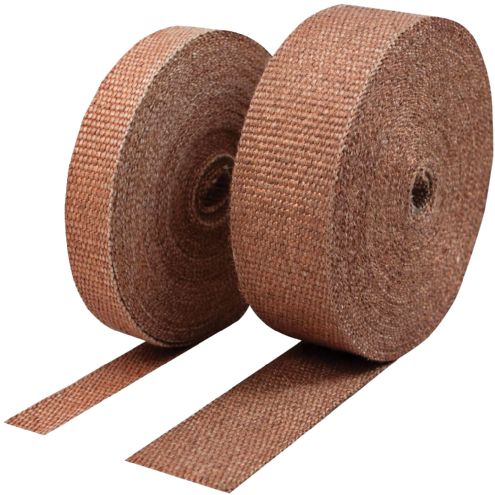
DEI Titanium Exhaust Wrap
DEI's Titanium exhaust wrap is actually made from pulverized lava rock (LR technology), which is stranded into a proprietary weave that was engineered to be stronger than most wraps for extreme durability, yet it remains pliable enough for a tight and secure wrap. It has a very high resistance to abrasions, oil spills, temperatures and vibration breakdown, plus a cool carbon-fiber–like look. Good for 1,800 degrees F direct and 2,500 degrees F intermittent heat, Titanium wrap can be used on the hottest pipes and serves to increase flow for improved performance.
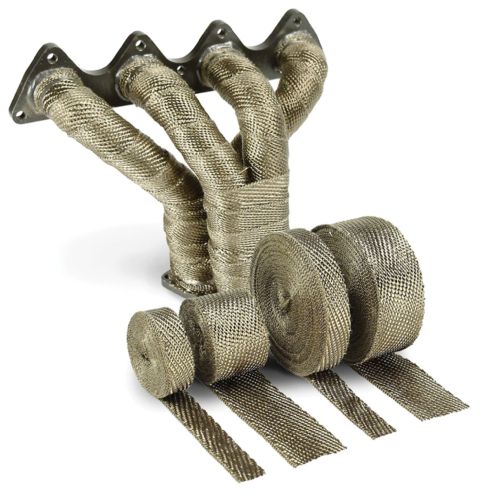
Coating the headers or manifolds is another method that works to trap the heat inside the pipe rather than radiating it outward. The coatings essentially work to make the steel itself less of a conductor of heat. They also have the added benefit of providing a tough barrier against corrosion.
Jet-Hot
Jet-Hot is the granddaddy of the coated header industry and everyone from hot rodders, racers, NASA, the U.S. Armed Forces, diesel engine manufacturers, and even the firearms industry uses their coatings to create heat barriers. They are continually improving their technology and options, like new custom print designs and colors in the coatings like this skull, or even color fades like the trick headers on the cover.
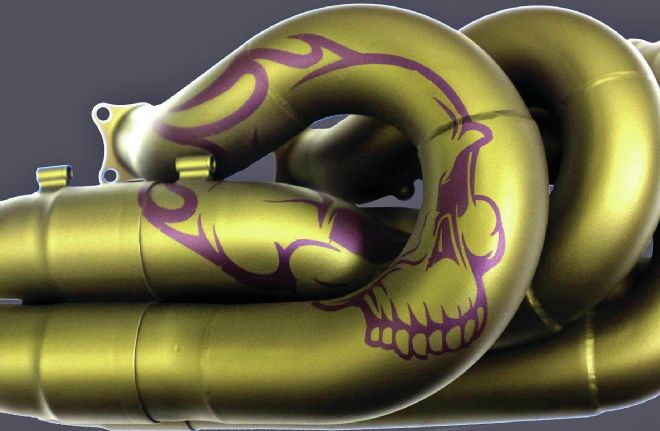
Either way, it still carries Jet-Hot's famous lifetime warranty.
Eastwood
If you already have a set of coated headers, that doesn't mean they can't be better. Most headers are not internally coated, unless special ordered that way. Internal coating works similar to the external coating by working to trap the heat inside the tubing. A header coated inside and out is very efficient at channeling heat out rather than radiating it. Eastwood's thermal coating withstands up to 1,800 degrees F and is easily applied at home on new or used exhausts with a 360-degree aerosol extension nozzle on a flexible 2-foot-long hose.
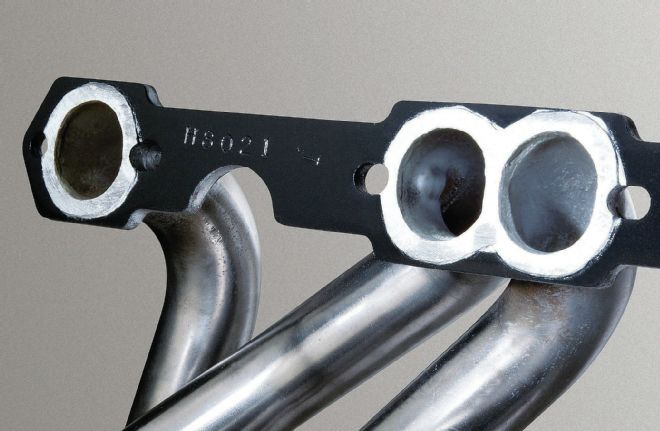
QFT Black Diamond Coating
Heat coatings aren't just for exhaust any longer. Quick Fuel Technology's (QFT) new Black Diamond coating is a heat rejecting outer coating available on all their carburetors. Carbs can see temperatures as much as 200 degrees underhood, and the chemicals in the fuel, oil, and coolant can literally bake onto a standard carb. Black Diamond is an impact- and scratch-resistant PTFE coating that not only prevents that, but lowers fuel temperature by about 6 percent to ensure maximum power and response.
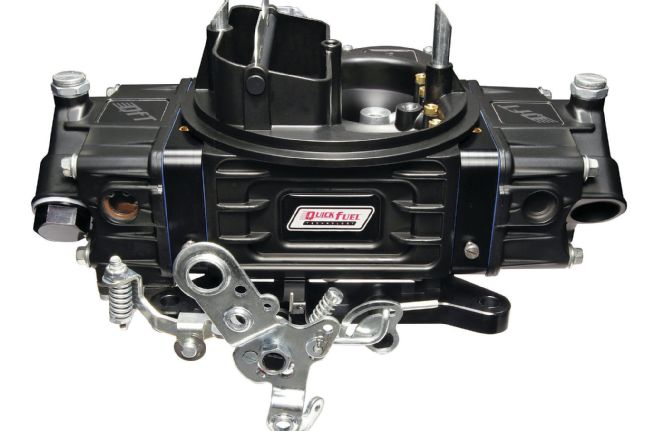
Electrical components react to heat, and elevated levels in the ignition system can lead to a multitude of problems from misfiring and arcing, to breakdown of the materials themselves. Direct contact with extreme heat can burn plug wires and instantly cause arcing, resulting in a loss of both fuel economy and power.
DEI Titanium Protect-A-Sleeve
DEI uses the same lava rock (LR) weave found in their exhaust wrap to create extremely effective and good looking plug wire sleeves. Developed specifically for any application where extreme high heat is present, these sleeves will protect wires, lines, and cables when exposed up to 1,800 degrees F direct heat or 2,500 degrees F radiant heat. The ½-inch id sleeves will fit most large diameter spark plug wires. Matching plug boots are also available.
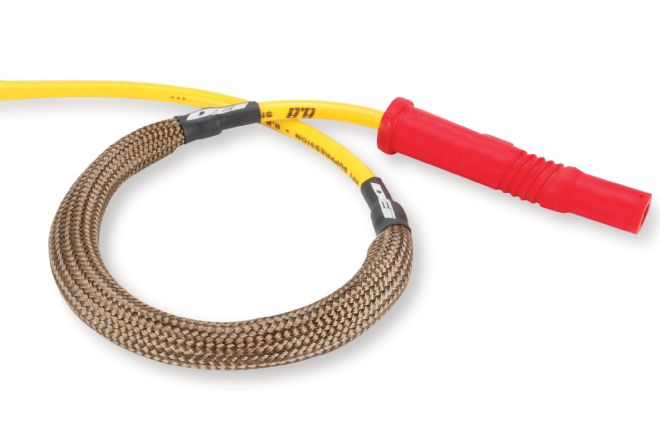
Thermo-Tec Cool-It Plug Wire Sleeves
These sleeves from Thermo-Tec feature a double-wall construction that keeps the wire and boot significantly cooler in a high-temperature engine. Keeping the plugs cooler helps enhance performance, reduce misfires, and extend plug wire life. The proprietary material is nonflammable and will not react with petroleum products. Multiple color choices also allow you to color coordinate with your existing engine dress or ignition brand.
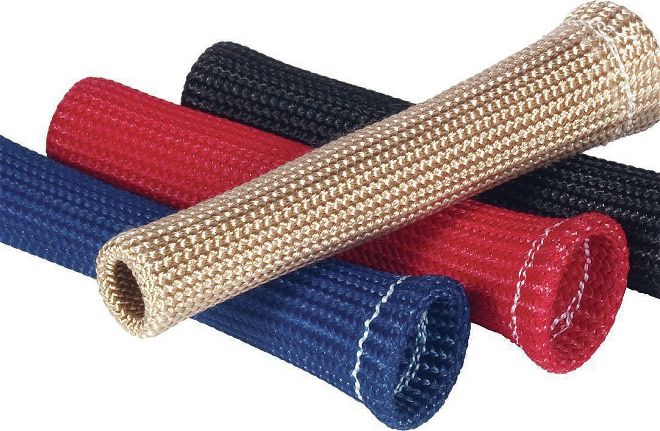
HSP Distributor Shields
Heat Shield Products (HSP) has been developing a line of component-specific sleeves like this Distributor Shield. HSP says it will not only improve a distributor's performance but also increase its lifespan by reflecting damaging radiant heat away. Capable of withstanding 1,100 degrees F of radiant heat and 500 degrees F of direct heat, this jacket is ideal for track days. The universal size with an adjustable hook and loop seam makes it work for any application.
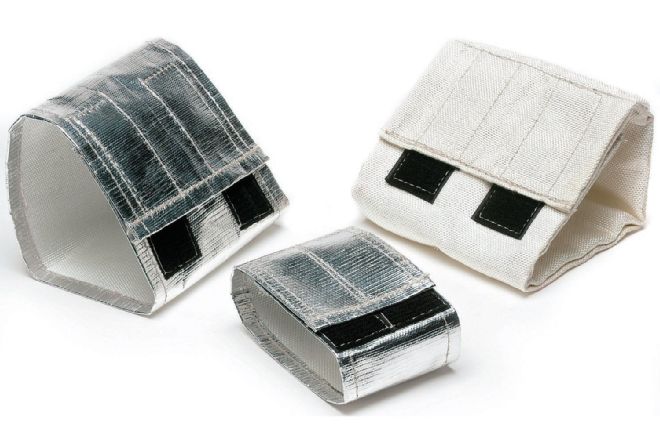
Oil in a mechanical system is not only for lubrication, it works as a heat sink as well. Even the best oils, however, have an operating zone at which they are most effective. Exceed it and you're asking for breakdown of the protective film and a loss of protection. Cooler oil will lead to longer change intervals, greater longevity for the systems they are lubricating, and less thermal stress on all the components in your engine and engine compartment.
Derale Atomic-Cool Remote Cooler
While Derale does offer unpowered coolers, the company's remote mountable coolers pack their own air supply for cooling, no matter what the location. A favorite of ours, this popular Atomic-Cool Remote Engine Oil Cooler can be mounted nearly anywhere, making it a popular addition for engine, steering, and transmission cooling in hot rods, muscle cars, and trucks. A heavy-duty plate and fin cooler is coupled with a Tornado fan that is operated by a 180-degree F inline thermostat.
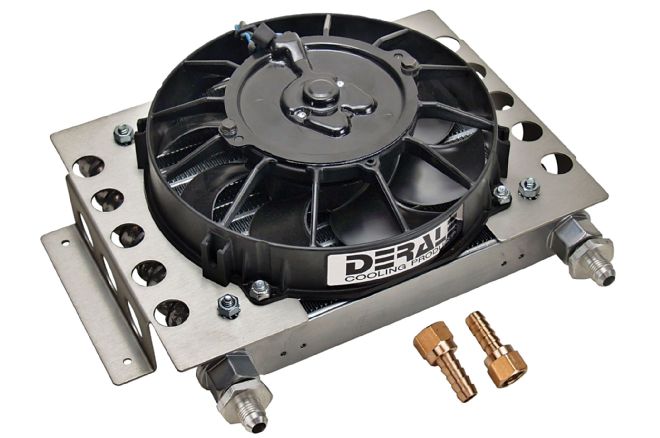
Earl's Temp-A-Cure
Standard serpentine-style tube and fin coolers have a large pressure drop due to the tube length and restrictive bends. To avoid that and increase efficiency in extreme conditions, Earl's Temp-A-Cure coolers are a modular design like those found on Formula One, IndyCar, and GTP/Trans-Am–style cars. The internal design of the oil tubes and the large area collector tanks provide maximum surface area with minimal pressure drop, while the highly concentrated air fins offer maximum heat transfer to the air.
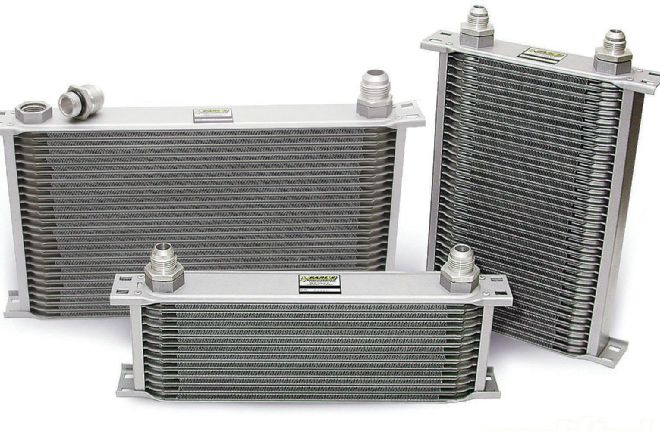
Hose wraps can work in two different ways: to protect the hoses and their contents from heat, and to protect you from the heat contained within them. We've used this type of product before, even testing (OK, torturing) them with prolonged, direct flame from a butane lighter. This category of stuff is practically impervious to anything short of nuclear fission, and is most effective at protecting fluid lines and electrical connections from extreme exhaust heat.
DEI Fire Sleeve 3000
Constructed from a high-temperature–resistant braided glass material woven into a sleeve and heavily coated with 100 percent iron oxide silicone rubber, DEI's Fire Sleeve 3000 provides insulation and protection from 500 degrees F continuous and 2,000 degrees F intermittent heat. Kits also include a 16-inch length of black Fire Tape to finish off ends of Fire Sleeve or when joining two Fire Sleeves together while presenting a clean and professional look. Fire Sleeve is available with and without a hook and loop clasp design depending on your install needs.
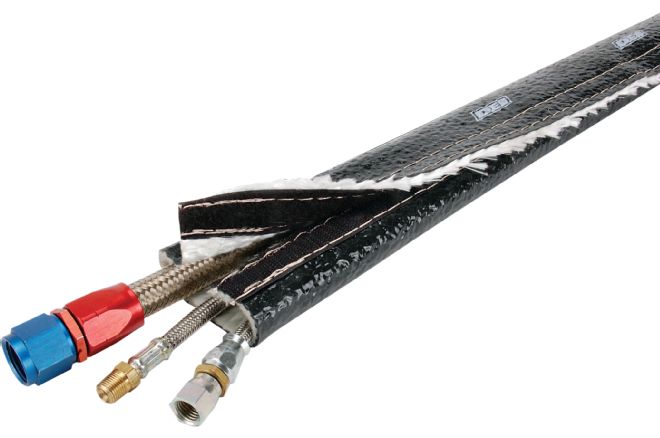
Thermo-Tec Thermo-Sleeve Express
Created from a seamless lamination of a high-temperature fabric to a highly reflective foil, Thermo-Sleeve works to prevent radiant heat from overheating hoses and wires. The aluminized sleeving reflects over 90 percent of radiant heat up to 2,000 degrees F, it can withstand direct continuous temperatures up to 750 degrees F, and it's both fireproof and oil resistant. Plus, Thermo-Sleeve is ultra lightweight and can provide as much insulation as heavier products. Fastened with Velcro, it's easy to apply these sleeves before or after plumbing and wiring.
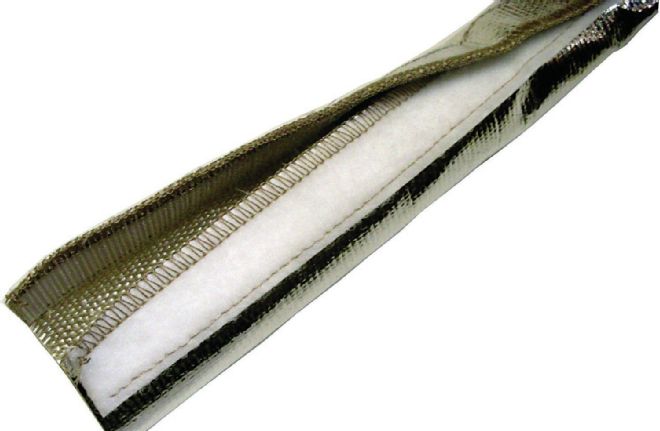
Heat Shield Products Thermaflect
Thermaflect Sleeve acts as a thermal barrier capable of reflecting up to 90 percent of radiant heat, provided it has a minimum of 1 inch of separating airspace and good airflow. It also weighs a fraction of what silicon-coated sleeves do, and it offers matching radiant heat insulation. Thermaflect Sleeve withstands 1,100 degrees F of continuous radiant heat and 500 degrees F direct heat. For convenience of maintenance, it's also available in a hook and loop seam.
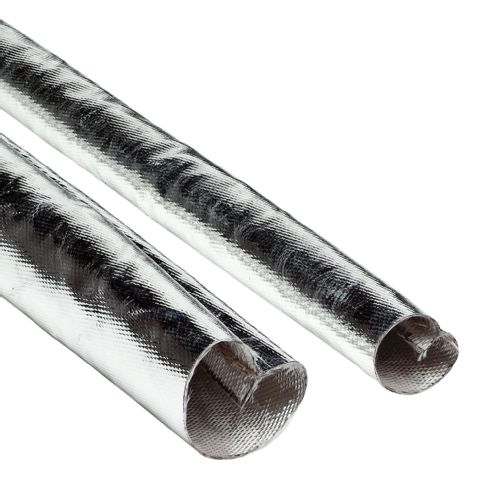
This is the largest category within the framework of heat control and contains far more products and applications than we can possibly cover here. It's also one of the most effective zones since it focuses not only on managing heat away from critical components, but away from the passengers as well.
Design Engineering Inc.
We actually have three Design Engineering Inc. (DEI) products here. On top, Under Carpet Lite is a sound-decoupling material for those hard-to-cover areas like door liners, rear decks, and headliners. It offers thermal insulation in a lightweight padding that provides less heat transfer in the summer while protecting against the transfer of cold air in the winter.
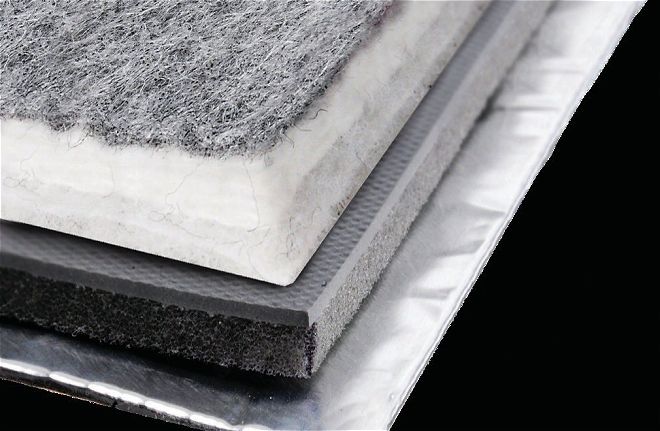
In the middle is Boom Mat Undercarpet, a second layer of sound deadening and insulation mat that will prevent noise transfer into the vehicle's interior. As a two-layer acoustic material, Boom Mat not only kills noise and rattles, it also provides insulation to keep vehicles cool in the heat of summer, and warmer in cold temperature climates.
The thin layer on the bottom is Boom Damping Material. A very thin viscoelastic polymer layer protected by a durable aluminum wear surface can be applied to horizontal, vertical, and inverted areas on metal, plastic, fiberglass and most other automotive surfaces to fight NVH, as well as reject extreme hot and cold temperatures.
Thermo-Tec Micro Louver Air Shield
Lightweight yet durable, the aluminum Micro Louver Air Shield from Thermo-Tec features micro air louvers, which allow air to flow through the metal shield. The movement of the vehicle creates dynamic airflow, cooling by natural convection. The textured surface created by the micro air louvers creates more area for heat dissipation. It is metal, but the lightweight shield bends and flexes easily by hand for custom fitting. We've seen this easily formed material used successfully on undercarriages where there's little or no separation among exhaust components (pipes, mufflers, and catalytic converters) and floorboards, fuel tanks, and fuel lines.
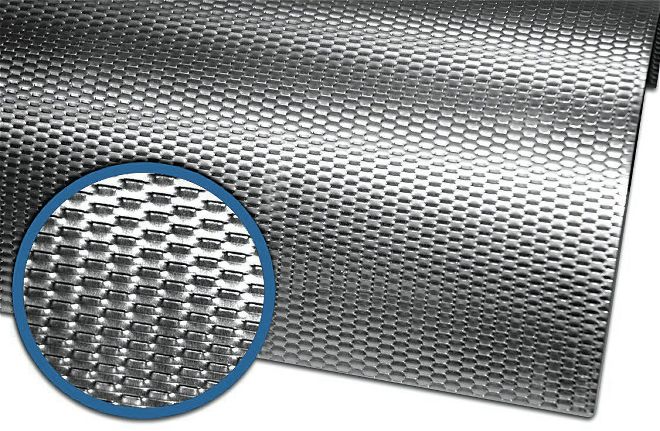
Heat Shield Products Lava Shield
Made from crushed volcanic rock, HSP's Lava Shield Mat helps to reflect and dissipate heat. Due to basalt's (a mineral from volcanic rock) natural chemical and acid resistant properties, Lava Shield is excellent for use in harsh environments like firewalls or transmission tunnels. Requiring only ⅜-inch free air to withstand 1,200 degrees F direct continuous, and 2,000 degrees F intermittent heat, Lava Shield is also ideal where airflow is especially low, making it a superior insulator to aluminum and gold barrier fabrics in these instances.
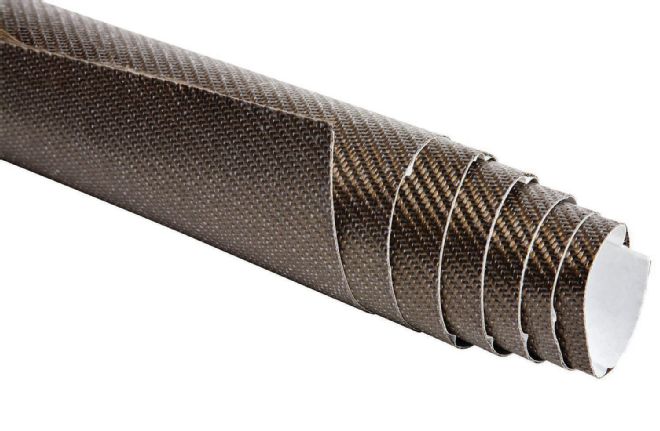
It's no big secret that an efficient radiator is the perfect way to keep a hot working hot rod engine well south of the 200-degree mark, even when you're hard on the throttle. What's not well known is that a heavier copper-brass alloy actually dissipates heat better than aluminum, but the tubes tend to be thinner, and the dissimilar metals used in construction can cause numerous issues over time. A well-built aluminum radiator can match (and in some cases exceed) a copper brass heat exchanger while coming in 30 to 40 percent lighter. That's certainly worthwhile for any performance-oriented muscle car.
AFCO Bolt-In Aluminum Muscle Car Radiator
AFCO's Direct Fit 100 percent aluminum radiators with billet aluminum filler necks will bolt directly into vintage cars with no modifications, since they have taken the time to ensure that the boltholes will all line up, that the cooling lines are in the proper locations, and that the OEM fan shrouds and accessories all bolt up with ease. Currently, GM, Ford, and Jeep bolt-ins are available from AFCO, while multiple universal radiators are available in several sizes for custom applications.
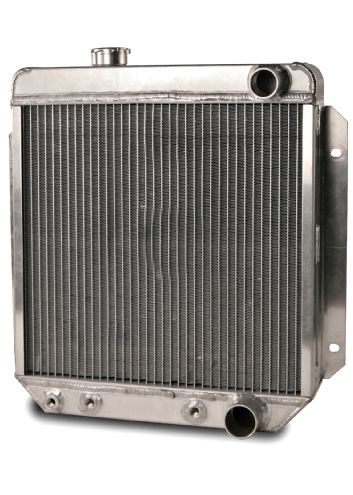
Be Coolant
Be Cool is well-known for their high-quality radiators, but they also make a complementary Extended-Life, Super Duty Coolant & Antifreeze that is ideal for all applications. Be Coolant uses a new-generation earth-friendly biodegradable, propylene glycol formula that protects cooling systems and aluminum components down to 26 degrees below zero (F). Extended life means 300,000 miles of protection for everything from commuter cars, to muscle cars, or tow vehicles. That new formula also features a self-sealing capability that is ideal for sealing hairline cracks in aluminum blocks and heads. Be Coolant is made in the United States, is compatible with all colors of coolant and all types of radiators, it comes ready to use in 5-gallon pails, and is UPS shippable. Check out our Be Cool 1,000hp Classic Direct Fit cooling system install story elsewhere in this issue for more details on Be Cool cooling systems.
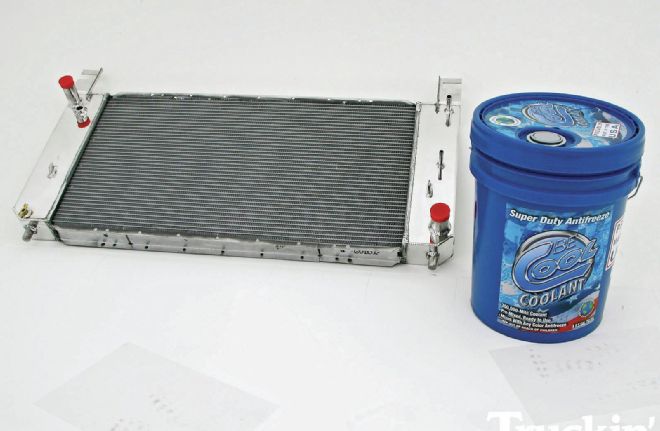
AMSOIL Dominator Coolant Boost
AMSOIL carries a top-tier Low-Toxicity Propylene Glycol Antifreeze, but their Dominator Coolant Boost can help any radiator work well with any existing coolant formula, including pure water. Dominator promotes heat transfer inside radiators and cylinder heads resulting in reduced operating temperatures, more efficient operation, increased horsepower, and significantly reduced engine warm-up times in cold weather. In testing, a 6 degrees F temp drop was observed with coolant, and 19 degrees with straight water. Coolant Boost also contains corrosion inhibitors that protect the radiator, heater core, water pump, cylinder heads, engine block, and intake manifold from the damaging effects of corrosion, so it can be used at tracks where sanctioning bodies prohibit the use of antifreeze.
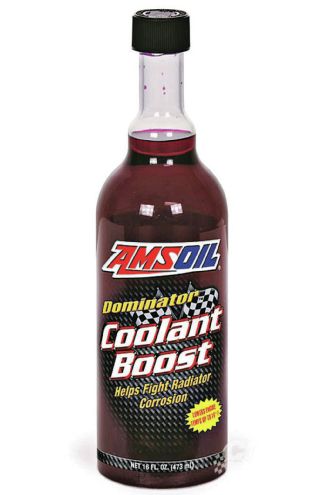
Like a better radiator, this one almost goes without saying. Water cools your engine, and a more efficient pump will not only move more water, but it creates less drag on the engine. It's an easy upgrade that every vintage engine needs!
Edelbrock Water Pump
There are a few companies making upgraded water pumps, but Edelbrock's are some of our favorites. We've noted better cooling just from swapping the pump on an engine while leaving the rest of the system alone. Since it is aluminum, the pump removes a little weight from the engine and even works to dissipate more heat than cast iron. Modern computational flow dynamics have also resulted in impellers designed for better flow and less cavitation while placing less load on your engine.
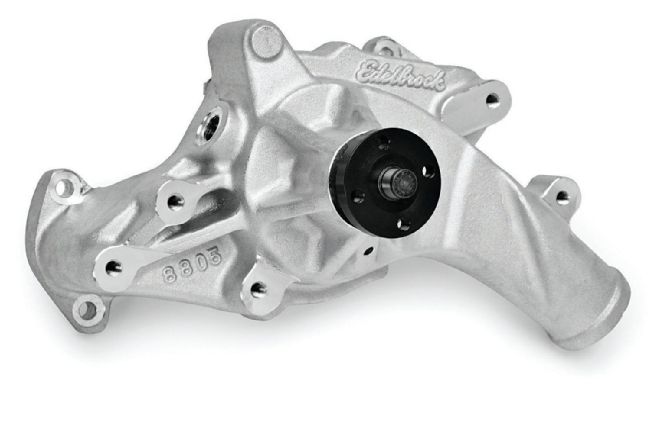
The more air you can move across a radiator or heat exchanger, the more heat it can efficiently conquer. And while an electric fan can never move as much air as a well-designed mechanical fan with a thermostatic clutch and a well-sealed shroud, sometimes engine swaps and extra equipment—or a change in engine compartment layout—will dictate the use of an electric fan. Beyond that, electric fans can also offer less indiscriminate parasitic drag, meaning that the form of the drag moves from a constant mechanical drag on the engine itself, to an intermittent drag on the alternator/electrical system. That said, a high-performance electric fan could rival the performance of the best mechanical setups, while significantly reducing weight and improving engine access.
Flex-a-lite
Flex-a-lite has been around since 1962 and making quality electric fans since 1978, so you know there's a good reason that they've stayed on top of the heap for all those decades. They use only premium materials and electric motors with high reliability. They've also worked to make getting rid of your mechanical fan easier with more than 80 electric fans, including nearly 30 direct-fit applications to make swapping to a performance electric fan an easy endeavor. Even better yet, they have managed to keep it all made in the United States!
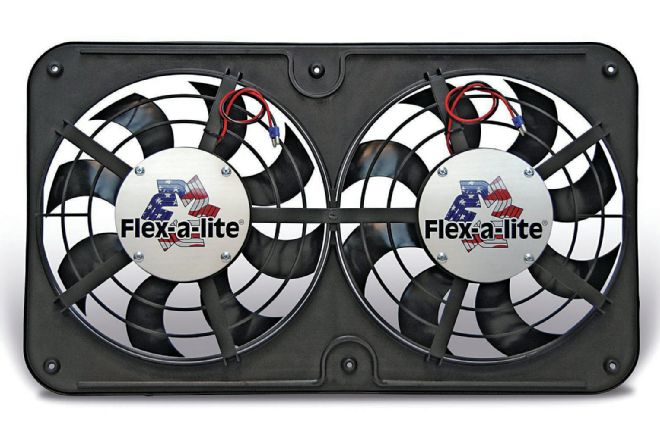
Delta PAG Brushless Fan
Delta PAG's fans use brushless motor technology that allows for high efficiency and an extremely long life of 50,000-plus hours. That's OEM territory, folks. Using the included digital temp/speed controller, the on/off temperature can be set and the cfm of the fan can be adjusted from 1,000 to 2,800 to fit the application, and the start-stop system in the controller uses soft-start technology to eliminate power spikes in your car's electrical system. Delta PAG also claims that their fans are the thinnest 2,800-cfm units you'll find on the planet, measuring only 2.70-inch thick.
